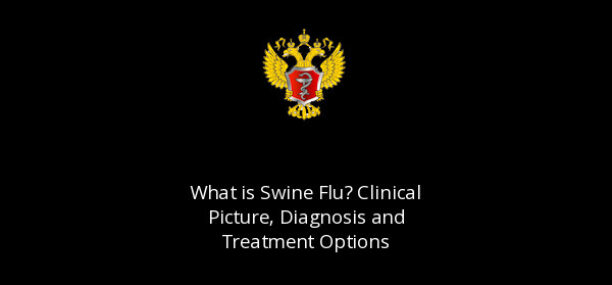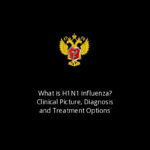Swine flu, also known as H1N1 influenza, is a respiratory illness caused by the H1N1 virus, which originally emerged in pigs but can infect humans.
H1N1 flu, commonly referred to as swine flu, earned its name due to its initial transmission from pigs to humans. Swine Influenza, caused by type A influenza viruses, primarily affects pigs but can occasionally infect humans, resulting in outbreaks of respiratory illness. Swine influenza virus (SIV), including subtypes H1N1, H1N2, H2N1, H3N1, H3N2, and H2N3, is endemic in pig populations. In 2009, the H1N1 subtype caused a global pandemic and was responsible for the Spanish Flu outbreak of 1918. While swine flu typically affects pigs, rare cases of human infection have occurred.
In 1998, swine flu emerged in pigs across four U.S. states, swiftly spreading throughout pig populations nationwide, with scientists tracing its origin to a recombinant form of flu strains from birds and humans. Subsequently, in June 2010, researchers in Hong Kong uncovered a new swine flu virus, a hybrid of the pandemic H1N1 strain and pre-existing pig viruses, marking the first reassortment event of the pandemic virus. The global impact of the swine flu pandemic of 2009 was staggering, potentially claiming up to 203,000 lives worldwide, a stark contrast to initial estimates. The outbreak, designated Pandemic H1N1/09 virus by the World Health Organization, commonly referred to as swine flu, prompted significant financial expenditures in the UK, with £654 million allocated for pandemic preparedness and an additional £587 million directed towards responding to the H1N1 outbreak, totaling £1.24 billion in expenditures
During the 2009 swine flu pandemic, approximately 20% of the global population, including half of all schoolchildren, contracted the virus, leading to an estimated 200,000 deaths worldwide. However, recent analyses suggest that the actual death toll may have been significantly higher, potentially reaching up to 203,000 individuals. The H1N1 virus responsible for the pandemic originated in pigs and is believed to be a reassortant with at least three parent strains, including the H1N2 influenza viruses found in North American pigs in the late 1990s. Despite being initially identified in 2009, swine flu remains a persistent threat to public health, with cases still occurring as recently as 2013. Influenza, including swine flu, continues to pose risks to individuals’ health, underscoring the importance of ongoing vigilance and preventative measures
Pathogenesis: The H1N1 virus primarily affects the respiratory system, causing inflammation in the airways and leading to symptoms such as cough, fever, and body aches.
Source of Infection: Swine flu typically originates from pigs but can also be transmitted from person to person through respiratory droplets.
Can you catch H1N1 (swine) flu from eating pork?
No. You can’t catch H1N1 (swine) or any type of flu from eating pork. Raw meat of all types may contain bacteria and viruses, but they’re killed by heat in the cooking process. Oddly enough, pigs are more likely to catch a flu virus from us!
Route of Infection: Swine flu spreads through the respiratory route, primarily through coughing and sneezing of infected individuals.
The contagious period for H1N1 flu is typically similar to seasonal flu, lasting for about one day before symptoms appear and up to seven days while symptoms persist, although it may extend longer in children. Transmission occurs primarily through respiratory droplets expelled when infected individuals cough, sneeze, or talk, dispersing the virus into the air. Additionally, contact with contaminated surfaces, such as doorknobs or sinks, can lead to transmission if the virus is subsequently transferred to mucous membranes of the mouth or nose. Swine influenza, including novel H1N1 and H3N2v strains, spreads through inhalation of the virus or contact with contaminated surfaces, with infected droplets disseminated through coughing or sneezing. Transmission can also occur through direct contact with infected pigs or environments where pigs have been, mirroring the spread of human flu through respiratory secretions or contact with contaminated surfaces. The virus can survive on hard surfaces for up to 24 hours and on tissues for only 15 minutes, posing a risk for transmission upon contact. Overall, individuals are contagious for approximately one day before symptom onset and up to seven days afterward, with symptoms typically appearing within 4 to 6 days after exposure.
Individuals who have contracted any form of influenza virus, including the swine flu (H1N1), are contagious starting from one day before they begin to exhibit symptoms. This period of contagiousness extends for approximately five to seven days after the onset of symptoms. During this time frame, infected individuals can easily transmit the virus to others through various means such as coughing, sneezing, or even talking, as respiratory droplets containing the virus can be expelled into the air. Therefore, it is crucial to practice proper hygiene measures and take precautions to prevent the spread of the flu virus, especially during the peak flu season
Incubation Period: The incubation period for swine flu is usually 1 to 4 days, with symptoms appearing within this timeframe after exposure to the virus.
Specific Symptoms: Specific symptoms of swine flu include fever, cough, sore throat, body aches, fatigue, and occasionally vomiting and diarrhea.
Swine flu, scientifically known as A(H1N1) influenza virus, exhibits a wider spectrum of symptoms compared to typical seasonal human flu, often presenting with not only respiratory manifestations but also gastrointestinal symptoms such as diarrhea and vomiting. This expanded symptomatology suggests a more aggressive viral invasion, particularly targeting the lower respiratory tract. Recent studies have shown that the A(H1N1) virus penetrates deeper into the lungs, potentially leading to more severe respiratory complications. The occurrence of diarrhea alongside fever, typically exceeding 100°F or 37.8°C, underscores the systemic impact of the infection, possibly indicating widespread viral dissemination and heightened immune response. These symptoms, reflective of the virus’s pathogenicity, highlight the diverse routes of transmission and the complex immunological mechanisms triggered by swine flu infection
Non-Specific Symptoms: Non-specific symptoms may include headache, chills, nasal congestion, and loss of appetite.
How to Suspect: Suspect swine flu if you experience sudden onset of flu-like symptoms during a known outbreak or after exposure to an infected individual.
Swine flu, characterized by typical flu symptoms such as sudden fever, muscle aches, sore throat, and dry cough, may also result in more severe vomiting and diarrhea. Symptoms like cough, fever, sore throat, stuffy or runny nose, body aches, headache, chills, and fatigue are common. Unlike a common cold, flu symptoms strike suddenly within hours, making it difficult to differentiate based on symptoms alone. It’s essential to seek medical attention if you experience difficulty breathing, chest or abdominal pain, sudden dizziness, confusion, severe or persistent vomiting, or flu-like symptoms that worsen, especially with a fever and cough. Swelling in the mouth or throat also warrants immediate medical attention.
When to Suspect: Suspect swine flu if you develop severe symptoms such as difficulty breathing, chest pain, confusion, or persistent vomiting.
Diagnosis: Swine flu is diagnosed through laboratory testing of respiratory specimens, such as nasal swabs or throat swabs.
Swine flu is typically diagnosed clinically based on the patient’s history of contact with individuals known to have the disease, along with the presentation of symptoms mentioned earlier. A rapid diagnostic test, such as a nasopharyngeal swab sample, is commonly performed to confirm the presence of the influenza A or B virus. During this test, a swab is taken from the nose or throat of the patient, and within approximately 15 minutes, the laboratory can determine if influenza type A or B is present in the specimen. It’s important to collect the sample within the first 4 to 5 days of illness to ensure accurate results
Treatment Options: Treatment options for swine flu include antiviral medications such as oseltamivir (Tamiflu) and zanamivir (Relenza).
How to Treat: Antiviral medications are typically prescribed to reduce the severity and duration of symptoms and prevent complications.
In most cases, treating swine flu involves rest and staying hydrated. Sometimes, your doctor may prescribe antiviral medications like oseltamivir (Tamiflu) or zanamivir (Relenza) to help prevent, shorten, or lessen the severity of the illness. However, these medications are often reserved for those at high risk of complications, as the virus can become resistant to them. It’s important to note that swine flu is resistant to certain antiviral drugs like amantadine (Symmetrel) and rimantadine (Flumadine). Additionally, N-95 masks are effective against the flu, while other types may not provide sufficient protection. Swine flu can be cured if treated promptly and does not usually result in death
To ease symptoms if you develop any type of flu, including swine flu, it’s important to prioritize rest and hydration. Get plenty of sleep to support your immune system and drink fluids like water, juice, and warm soups to prevent dehydration. Over-the-counter pain relievers can help manage aches and fever, while addressing coughs with steam inhalation, humidifiers, and lozenges can provide relief.
Best Medicines: Oseltamivir (Tamiflu) and zanamivir (Relenza) are commonly used antiviral medications for treating swine flu.
Untreated Consequences: If left untreated, swine flu can lead to severe complications such as pneumonia, respiratory failure, and death, especially in high-risk individuals.
The most frequent and potentially fatal complication of the flu is bacterial pneumonia, a lung infection caused by bacteria. This secondary infection can significantly impair lung function, making it difficult for individuals, especially children, to breathe adequately. As a result, their bodies may struggle to obtain sufficient oxygen, leading to severe respiratory distress. Additionally, sepsis, a life-threatening condition triggered by the body’s extreme response to infection, can also arise as a complication of the flu and contribute to mortality.
Prognosis: The prognosis for swine flu is generally good with prompt diagnosis and appropriate treatment, but severe cases can be life-threatening.
Typically, seasonal flu predominantly results in fatalities among individuals with underlying health conditions and the elderly population. However, concerning the swine flu strain, children and pregnant women seem to face heightened susceptibility compared to previous seasonal flu strains
Prevention: To prevent swine flu, practice good hygiene, avoid close contact with sick individuals, get vaccinated, and follow public health recommendations during outbreaks
Federal officials have announced that a vaccine to combat the new flu strain is anticipated to be available by mid to late October. Despite this, many individuals remain uncertain about the mechanisms through which the H1N1 virus can lead to fatalities. While some strains of influenza are relatively benign, others, such as the H1N1 virus, commonly referred to as swine flu, can pose significant risks to health and even result in death. To address these concerns and mitigate the spread of the virus, vaccination emerges as a crucial component of prevention strategies. Exploring vaccination options, the efficacy of the vaccine, and its role in bolstering immunity against H1N1 becomes paramount in safeguarding public health and reducing the impact of the pandemic
To prevent the spread of swine flu and reduce infection risk, follow the CDC’s guidelines: Cover your nose and mouth when coughing or sneezing, wash hands frequently with soap and water, especially after coughing or sneezing, and avoid touching your face. Additionally, limit close contact with sick individuals. Swine flu precautions also include staying home if you’re sick, containing coughs and sneezes, washing hands regularly, using hand sanitizer, and taking care in public facilities and during air travel. By incorporating these practices into daily life, you can help protect yourself and others from the flu. Remember, viruses can survive longer on certain surfaces, so it’s essential to regularly clean high-touch areas and practice good hygiene habits to minimize the risk of transmission
Verified by: Dr.Diab (March 25, 2024)
Citation: Dr.Diab. (March 25, 2024). What is Swine Flu? Clinical Picture, Diagnosis and Treatment Options. Medcoi Journal of Medicine, 7(2). urn:medcoi:article20804.













There are no comments yet
Or use one of these social networks